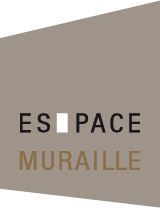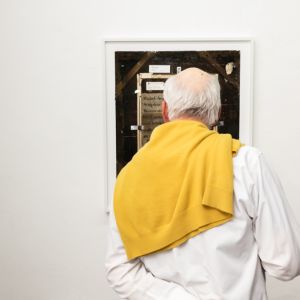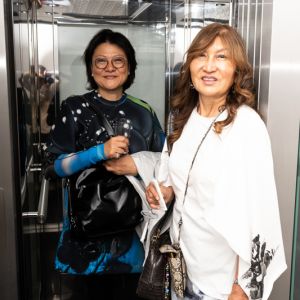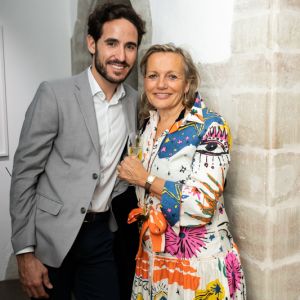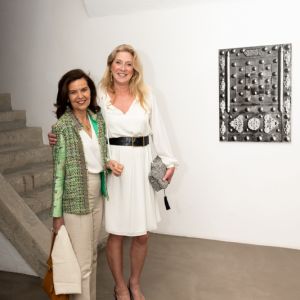Opening May 4 from 6 PM
“To go straight to the thing itself”: such was one of the mantras of a part of twentieth-century Western philosophy, which, under the name of phenomenology, attempted to describe the phenomena of the world as such – in other words, as they appear. Since the end of the 1980s, Philippe Gronon has been using photography, but now also the latest mechanical reproduction techniques available (such as scanning), to examine some of the objects that surround us by recording them as such, establishing a factual record of their state, fixing their exact appearance before our eyes; in short, making without reservation a kind of material portrait of them (no symbolic or allegorical approach here). Indeed, for Philippe Gronon, it is a question of straightening things out.
This means, first of all, that this kind of phenomenal photography attempts to give a direct account of what is in front of the recording device. The totality of the reproduced objects that can be seen in the Geneva exhibition (safes, the versos of canvases, the door of a nuclear shelter) is available before our eyes on a 1:1 scale, such that the motif in question is there before us as it is in itself, in all its truth, or at least according to the strict accuracy of its physical coordinates. All the more so since, extracted from its context, it appears as if it were alone in the world, existing only by and for itself. No composition, no retouching ; on the face of it, only what exists around us as it exists and as it appears, as it identifies itself, without supplement – without sentence. To straighten things out is to examine them point by point and every which way, because they are there before our eyes in all their aspects, without restriction and without opacity, because they are there distinctly and in full light. The doors of safes, for example – a motif, incidentally, that is particularly appropriate to a city of banks and banking secrecy such as Geneva – are presented to us in their strictest nakedness, and in their disarming materiality. Nothing is missing from their frontal presence: the grain of their surfaces, the details of their wear and tear, the traces of their life as objects, the technical characteristics of their use. The provision of the thing is meant to be total, absolute even. This photographic exhaustion of the object – its unresisting surrender to the lens – seems to be guided by the mission to show us – to tell us – the truth of the world, to indicate to us – to give our gaze over to – its manifestation as such. There is undoubtedly here a return of photography to its original purpose, almost to its essence, that is to say also to its childhood.
The eloquent muteness of the subjects – the objects – chosen by Philippe Gronon, his obstinate desire to work at the heart of appearances, his project to straighten them out, also involves another operation, which has been widely noticed and commented on by the exegetes of his work: most of the time, this work results in producing images without thickness, practically without perspective, almost without depth. Mounted on an aluminium plate detached from the picture rail by a few centimetres, they are there on the wall and in the space, on a thin mount that marries perfectly with their flat appearance. For Philippe Gronon’s project is to record some of the world’s surfaces exactly, to fix them in order to let them be seen and seen again, to let them to be noticed from the unadulterated truth of their superficial manifestation. There is here a kind of foundational flatness of the gaze, constituting an integral part of reality and of its aspects such as the photographer envisages them. For example, looking at the versos of some of the best-known and most celebrated paintings in Western art, exposing the verso of the visible and its history (the backs of canvases record not only certain key elements and moments in the making of the painting, but also its transport, and its museum and exhibition life – since it carries the labels of its transporters, as well as those of the various museums to which the work has been lent, for example), leads to the motif becoming a pure holder for the pieces of paper that are attached to it, which are also perfectly flat, and these sheets without thickness add flatness to flatness, explore it, confirm it and double it, designate it. A true celebration of flatness, several of these versos are thus its mise en abyme. Slim surface on surface, flatness on flatness, these photographs of the backs of paintings become filmy worlds that also give us something to read because they accommodate the visible and the legible, the trace and the letter, the material and the sign. Here Philippe Gronon is actually making paintings, although turned around ; with great mischief, this series deals explicitly with the relationship between painting and photography: making a painting does not necessarily mean painting. In any case, a large part of this work is concerned with exploring the photographic condition of pictoriality.
Moreover, the surface – along with its treatment and exploration, its maintenance – was one of the great issues of modernist painting in the twentieth century. A history to which Philippe Gronon contributes from the point of view of the surface that is recorded, represented and framed, mechanically questioned. Thus, when he photographs the door of the nuclear bunker of the Ministry of Finance in Bercy, Paris – a large image (170 x 190 cm) that imposes itself on us – he also records the play of shadows produced by the lighting directed onto the motif. Indeed, towards the top of the work, they act and produce a slight physical and optical depth that does not, however, contradict the flatness so prevalent in this work. In fact, we are dealing here in a plastically deterritorialised manner with what the art historian and critic Jean Clay analysed at the end of the 1970s, under the Greenbergian name of « flat depth », which, according to him, is active in Seurat, Pollock and Mondrian: a way of treating the surface itself by appending to it a perspectival effect – so tenuous that it cannot absolutely destroy the hold of flatness in the image, its radiance in spite of everything on the totality of the holder. It is likely that such a situation can also be found in this body of work, which forgets neither painting nor canvas, without, however – without ever – fetishising them.
Thus go and thus act Philippe Gronon’s series of bachelor photographs.

Since the end of the 1980s, Philippe Gronon has been developing a photographic body of work whose point of departure is the definition of photography at its most simple: that is to say, a technique for creating images that records reality as it is. This statement is translated into a production protocol. The quasi-totality of the objects that are photographed (amps, safes, listing tables, writing cases, lithographic stones, electrical dashboards, the back of paintings, etc.) and more recently digitalized and scanned (martyrs, photographic frames and trays, printing frames and the digitizing machine) are all taken head-on, on a 1:1 scale. They are cut out, isolated from any context or spatial-temporal situation, which gives them a great new formal intensity. Photographic subjects as much as objects, perfectly reproduced without being fetishes or artefacts, these motifs evade simple imagery. Their flatness and the manner in which they are framed reference the history of painting, which confers upon each photograph a pictorial quality. Moreover, their false frontal simplicity opens these images up to the discovery of a world: that of the objects that surround us, here acquiring an aura.
Philippe Gronon was born in 1964 in Rochefort. He lives and works in Malakoff.
Since 1991, he has taken part in numerous personal and collective exhibitions in France and abroad, such as: « Philippe Gronon », Frac des Pays de la Loire, Carquefou 2001; « Retournements », Musée d’Arts de Nantes, 2010; « Philippe Gronon - L’altro lato », Villa Medici, Rome, 2010; « Philippe Gronon. ‘Révéler’ », Musée Picasso-Paris, 2016; and a large-scale exhibition dedicated to his work at the Musée des beaux-arts in La Chaux-de-Fonds, Switzerland, in 2021.
His work is represented in several public collections, such as: the Musée national d’art moderne Georges Pompidou, Paris; the Louvre Museum, Paris; the Mamco, Musée d’art moderne et contemporain in Geneva, Switzerland; the Mamac, Musée d’art moderne et contemporain, Nice; the Musée de l’Elysée in Lausanne and the Musée des beaux-arts in La Chaux-de-Fonds, Switzerland.
